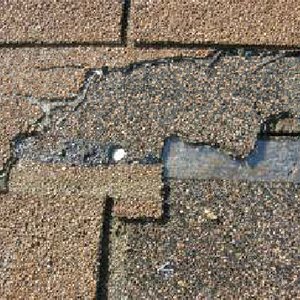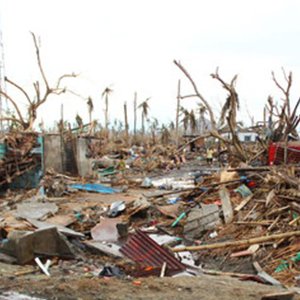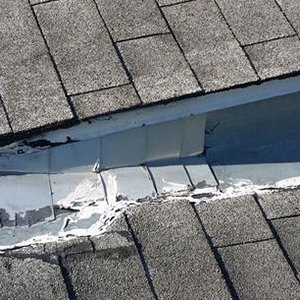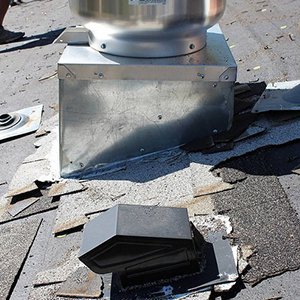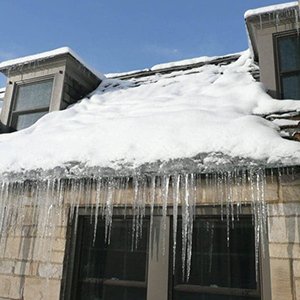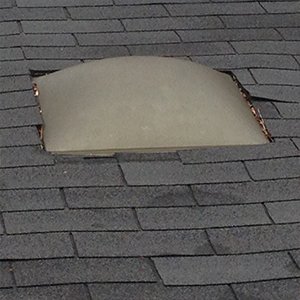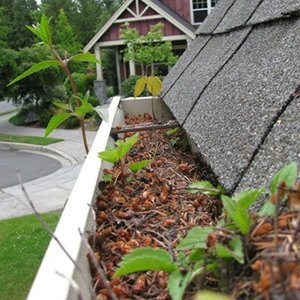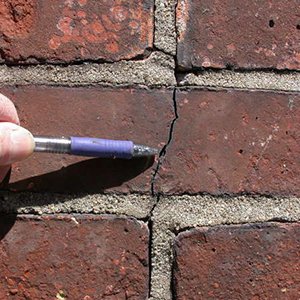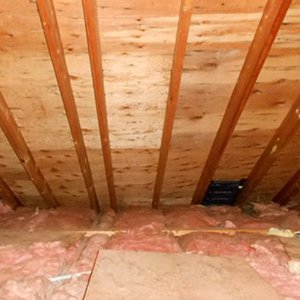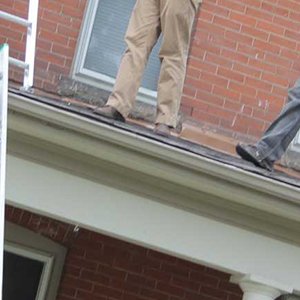Natural disasters occur every day, all around the United States, whether it is a tropical storm, a hurricane, a tornado, landslides, water surges, and more. When citizens live in states that are prone to natural disasters, they face the unknown. Being in the hurricane season, Florida is now in the midst of tropical storms and hurricanes. Last year, being one of the numerous hurricanes that made landfall and cost billions of dollars in damages, Irma being a remembered hurricane, homeowners must fear what this year will bring. The most important thing that should be considered foremost is the lives of those living in those homes. If a hurricane is to strike, families should consider leaving their homes and ensuring that their well-being is kept safe. At the end of the day, a life cannot be replaced. Specialized public adjusters that practice in Florida can help guide their clients and grasps the issue at-hand to ensure that the home owner’s insurance policy covers them and compensates them if a tropical storm or hurricane were to be the cause of their home sustaining damages.
Remember, the property comes and goes, but lives can’t.
In order to acquire the best out of the situation, a homeowner must go through a series of steps prior to submitting a claim for a natural disaster like a hurricane. Filing a claim is not as simple as 1,2,3. Each claim is unique and may require specifics and specific requirements before being able to be processed. If a claim is improperly filed, the homeowner who is claiming the damages may lose their chances of being able to recuperate the losses that they suffered. That is a horrible situation that the professional public adjuster in Florida do not want them to go through.
Types of Hurricane Coverages
Before filing a claim for a natural disaster, one should know what is covered under their policy for natural disaster. There are three different types of hurricane coverage, including:
- Deductibles for windstorm: This coverage refers to damages acquired as a result of tropical storms, winter storms, and other storms that comprise wind damage.
- Deductibles for a named storm: This coverage covers damages that come from storms that have been named, for example, tropical storms.
- Deductibles for hurricanes: This coverage is only present for storms that have been deemed to be of Category 1 or higher when they have struck land. Reviewing each policy is advisable because the laws pertaining to each of these coverages are different per each state.
Why is a public adjuster important for a Hurricane Claim?
It is crucial to understand the differences and know what is covered through these coverage’s. Public adjusters can help decipher the legal jargon that is embedded with these sometimes, overburden policies. What coverage do you have? Is it sufficient for your needs?
What Can Be Done by You
Because every state has its own laws, and every claim that is made for a natural disaster is different, the policyholder should do certain things to ensure that they are covered prior to a hurricane. Some things that a homeowner can do include:
- Taking Flood Insurance into consideration
- Adjust the limits you have for every deductible and learn which those are
- Have your home, business, and family prepared for the storm that lies ahead
- Find out the relevancy to the named storms that occur in the state you live
Asking if hail or wind deductible is present within the limits of their policy
After a Disaster Has Manifested, These Steps To Claim Insurance Should Be Taken
In order to ensure that the proper response and the best possible outcome are attained from the matter, the insured must take immediate action by performing these following critical steps preceding a natural disaster that will assist them during the claims process:
Step 1: Assessing the Damages of Your Home Properly
Assessing the property is the first step to correctly filing a claim. The entire property must be adequately evaluated to obtain an accurate estimation. Not accurately assess the property can result in an underestimate or overestimate. Either way, those are two situations you do not want to find yourself in when you are trying to seek relief from natural disasters. Taking pictures of the losses that have been suffered is an accurate way to assess the property accurately.
Step 1a – Items you can use to document damages which are viable for insurance companies:
- Images: High quality images, preferably anything above 4 mega pixels – Modren smart phone or cameras can do this.
- Video: High quality videos, anything that records above 480p resolution – Camcorders, smart phone can do that with no problem.
- Documentation: Ensure the damages are well written and detailed, you can do this electronically or hand written, preferably digitally – PDF or DOCX format.
Step 2: Policy
One thing to keep in mind is that every insurance policy varies from person and household, which emphasizes that reviewing your current policy is crucial. Many individuals will consider this action as the very first step that they should take when filing a claim, but it is in fact, the second one that should be taken. Once the initial phase of collecting evidence for all the damages that have been endured by taking pictures, then you can go through your policy and review the full extent of the details and figure out which deductibles are inclusive and which are not. There have been situations where the policyholder had to pay for the repairs of their home because the losses they incurred were not within the limits of their deductibles.
Step 2a – How to properly review your insurance policy
When attempting to decipher all the insurance legal jargon you can use a glossary to obtain definitions – click here for more information
If you go to section “types of hurricane claims” you can get a good definition of hurricane deductibles.
Step 2b – Important insurance coverage sections
Warning: You should always consult the help of a public adjuster or attorney when trying to understand your policy.
Step 3: Ensuring that Before the Storm, Proof of Property Exists
This step is extremely crucial as you can fail to show proof of the state of the property and items within the home before the storm, while having done step one and step two already. Having evidence of this will make the claim process much more manageable. It’s imperative to take pictures in advance of all the items of importance in the home beforehand as a preventative measure. Especially if you live in an area where hurricanes often hit or in an area where there are tornadoes or floods as such, then the first thing to be done is to make sure that pictures of all the valuables are kept somewhere safe.
Step 3a: Who should have proof of your property
- Realtor’s
- Tax Assessor’s
- Title company
- Escrow company
- Recorders Office
Step 3b: What documents can show proof of property
Step 4: Contact The Insurance Broker
The insurance company will more than likely send an assessor out to the property in question. By contracting a public adjuster, they will help you by arguing the claim of you before the insurance company. The Public Adjuster will not seek to protect the insurance but rather the individual or the company that has the claim before an insurance company. Knowing the role of this person will make your claim a lot easier. Typically, people will not realize until the damage has been done, meaning they will not recognize these figures until they are in need of one.
Learn more about the differences between adjusters and lawyers
Step 5: Knowing The ins and out of the Insurance Claim
Knowing whether the damages done to your home were sudden or accidental is imperative to file the proper claim. See, most insurance companies will try to deny the way the losses happened, and they will always protect their best interest in this case “money.” However, every claim is different; therefore, it is essential to know the correct terminology when dealing with an insurance claim. Understanding your policy and legal jargon associated with your insurance claim and save you many headaches. Seeking for public adjusters who are experts in home insurance is always a piece of advice that we offer.
Step 6: Recap The First Five
If you are seeking reimbursement of the insurance company and are attempting to recover the money yourself you can; however, it is not ideal especially when you have public adjusters and attorneys at your disposal who are willing to help. Ensuring that the proper documentation is given, having the right estimation of damages and handymen who are eager to provide their professional input on the matter will become the basis of your insurance claim.
The steps mentioned above have no particular order, but at least you have a firm understanding of the essential information you need to file your claim. It’s always suggested hiring a licensed public adjuster to help you file an insurance claim against your insurance company to help to save time and complications which may arise from fighting with your insurance company because they will fight and try to low-ball their insurers.
Recent Most Impactful Hurricanes in the United States
Living in certain areas like Florida brings its luxuries, but residents are also faced with the possibility of a potent natural disaster like a hurricane each year. These are some recent hurricanes that have blasted through the state of Florida in the last 30 years that have killed many and brought an enormous loss for the state:
September 16-30, 2017 – Maria
Hurricane Maria became a Category 5 that hit the Dominican Republic and then struck Puerto Rico as a Category 4. The death toll in Puerto Rico came to 64, but many reports have found that there may have been more deaths; as a result, as many as 1,000. The damages well exceeded 90 billion, and residents in Puerto Rico are still living with the effects of this hurricane. In fact, many of them are still living without any power. In addition to deaths in Puerto Rico, this major storm took lives in Haiti, Dominican Republic, and St. Thomas.
August 30 – September 12, 2017– Irma
Hurricane Irma was a Category 5 storm that made several landfalls, including the northern Caribbean and southwest Florida. This devastating hurricane struck the Florida Keys as a Category 4 storm. 44 people were pronounced dead as a consequence of this storm within Florida and the Caribbean. The storm resulted in the evacuation of 6 million people all across Florida. 50 billion dollars in damages arose from Irma.
August 17 – September 1, 2017 – Harvey
This Hurricane, Harvey, strung along Texas for a total of four days. Bringing on floods and an abundance of water, it made landfall as a category 4, and to-date has caused the most amount of damages, equaling 128 billion dollars. This storm earned the name as the storm that has brought on the most rainfall in the time-frame of 6 days, a total of 27 trillion gallons. Storm-related fatalities for Texas was at 68.
October 22-29, 2012 – Sandy
Hurricane Sandy, although not so high in Category (3) was very disastrous. It caused 147 deaths combined in various locations like the United States, Haiti, Cuba, Dominican Republic, Bahamas, Puerto Rico, Bahamas, and Canada. It cost 65 billion dollars in damages.
These intense storms go to show that one must take action to prevent themselves from becoming a victim of a natural disaster. The number of lives that can be lost and the number of damages that the state can sustain will never compare to one’s well-being.
When a Disaster Is Near, Our Public Adjusters Do Not Fear
A public adjuster can do a considerable amount of good for their clients. Not only are they best qualified for property losses and damages, but they also sympathize with their clients because they know what it is to lose it all. They deal with individuals who have faced what many people would never encounter in their lifetime. They know that in a matter of seconds, a whole home could be lost. A public adjuster in Florida will utilize their expertise to ensure that their clients’ feelings are considered during the entire process. Get in communication with one of our skilled public adjusters; we are only a phone call away.
References:


